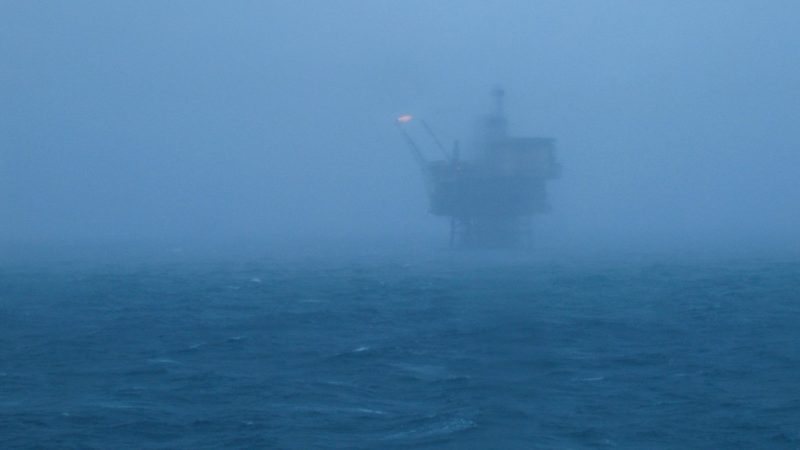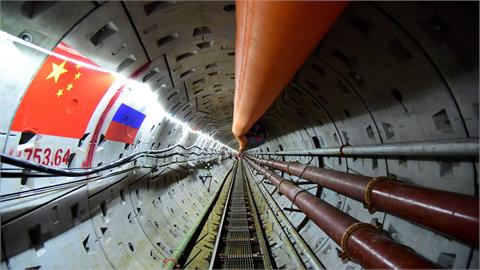by Robert Hodgson* Europe is hardly the first place that springs to mind when thinking about the world’s major oil-producing regions, and there is a perception that the domestic industry has already seen its heyday, particularly in the North Sea. However, although the price of crude oil has recovered only slightly since it crashed from over $100 dollars a barrel to little over a half of that through the second half of 2014, exploration continues apace
Europe is hardly the first place that springs to mind when thinking about the world’s major oil-producing regions, and there is a perception that the domestic industry has already seen its heyday, particularly in the North Sea.
However, although the price of crude oil has recovered only slightly since it crashed from over $100 dollars a barrel to little over a half of that through the second half of 2014, exploration continues apace.
Dynamic new players are coming in to exploit existing reserves, while Norway has been pushing to promote the exploitation of untapped reserves in remote northern waters. Moreover, a recent study commissioned by European oil and gas producers and seen by EURACTIV suggests the bulk of new European production could break even at just $60 a barrel – a price level surpassed in a December rally that, so far, seems to be holding.
The industry is optimistic about the future of offshore oil drilling in European waters, even if the dynamics of the industry are changing, said Nareg Terzian, spokesperson for the International Association of Oil and Gas Producers (IOGP).
Europe is never going to see a return to historical levels of production in mature fields such as the North Sea, but even here there is plenty of interest in tapping the remaining reserves, and not only from the incumbent major oil companies.
"Smaller players are coming in to help squeeze out the last drops of what is in the ground. We’re looking at 13 to 26 years of production left at current levels,” Terzian said.
The study into the competitive outlook for Europe’s upstream oil sector, commissioned by the IOGP, suggested that the economic rationale for further oil drilling has improved in recent years.Almost two-thirds (65%) of North Sea projects at the pre-final investment decision (pre-FID) stage could break even by 2024 with an oil price of $60 a barrel, the analysis suggests.
UK production is among the cheapest, with some 85% of projects potentially in the black at that price point, according to the analysis by Wood Mackenzie, a consultancy. For Norway and the Netherlands, the average figure ranged between 60% and 80%.
By contrast, across Europe as a whole, only 30% of investments were considered equally promising back in 2014. Sentiment is buoyed by robust demand, with a solid outlook confirmed by a recent report from the International Energy Agency.
Moreover, oil firms are emerging from a period of consolidation where oil was trading at around $40 a barrel: they now want to preserve the efficiency gains made during that time and avoid another cycle of cost inflation, Terzian said.
Norway’s Statoil, for example, boasted in October that it had managed to cut ongoing production costs to the extent that its overall break-even oil price had fallen from $100 to just $27. "The industry is prudent but optimistic, and there is a feeling that the tough times are past,” Terzian said.
‘Significant resource upside’
Norway is set to remain by far the main player in future European oil production, while the UK is in second place. "We’re not looking at a return to 1990s levels of production, but investments are flowing into Europe and there is high potential in the Black Sea and the Eastern Mediterranean,” said Terzian.
Nor is the future outlook all about squeezing mature oil wells dry. Norwegian plans to open up virgin fields in the Arctic waters of the Barents Sea have recently attracted considerable public attention. And IOGP figures suggest that potentially huge (by European standards) volumes of crude oil are still lying hidden.
According to the Wood Mackenzie report, apart from known commercial and technical resources, there are the equivalent of 14.7 billion barrels worth of "yet to find” (YTF) gas and oil deposits across Europe – up some 800 million barrels since 2015 due to growing activity in key exploration hotspots.This includes some two billion barrels of crude oil in the North Sea and a whopping 2.85 billion in the West Barents Sea. The consultancy saw "significant additional resource upside” on the basis of a drilling forecast through to 2035.
This bullish outlook for supply appears to be shared by the Norwegian government.
The Norwegian Petroleum Directorate (NPD) said last week that "undiscovered reserves” of oil on the country’s continental shelf are just short of two billion cubic metres (equivalent to 12.5 billion barrels), with roughly two-thirds of this lying under the Barents Sea.
This far exceeds the level of proven oil reserves, which stood at some 7.1 billion barrels at the end of 2017 according to the NPD’s latest resource accounts, released on 27 February.
Developments are not confined to Norway, however. The oil major BP recently announced the discovery of oil at two locations in UK waters. North Sea regional president Mark Thomas said the firm expects to double local production to 200,000 barrels a day by 2020 – "and keep producing beyond 2050”.
Although the new discoveries have yet to prove themselves, more concrete news of BP’s Quad 204 project coming onstream last year and another, Clair Ridge, set to follow in 2018 fuelled speculation last week that the UK may be on the verge of becoming a net exporter of oil for the first time since 2004.
The UK Oil and Gas Authority agreed, up to a point, forecasting on Friday that crude oil output was set to rise this year, from 0.89 to 0.94 million barrels a day. However, this level of output was only seen lasting until 2019, before a long-term decline would resume and continue to mid-century, beyond which the government agency attempted no predictions.
Despite caveats about the wildly unpredictable nature of oil production, the report notes that cumulative production through to 2050 is set to be 2.8 billion barrels more than it would have been without implementation of the 2014 Wood Review into maximising economic recovery from the UK continental shelf.Opposition v. opportunity
While Europe’s thirst for oil looks set to wane in the coming decades, according to the International Energy Agency, overall, global demand is set to rise by 0.5% a year for at least the next twenty years.
European demand far outstrips domestic production, and oil is in any case a global market, so it would appear there is an economic rationale for further exploitation of domestic oil reserves – or, indeed, investing in the hunt for undiscovered reserves.
However, there is strong political and public opposition, driven by concerns over environmental impacts and a growing awareness of climate change.
In a non-binding resolution adopted in January, the European Parliament said no exploration or drilling should be allowed in "vulnerable areas of high conservation value”, as well as the Marine Protected Areas (MPAs) that represent just under 6% of waters in the EU’s 200-nautical mile exclusive economic zone.Any new licence for oil or gas exploration should follow "strict precautionary regulatory standards in the field of environmental protection and safety…and should include binding commitments as regards the decommissioning of exploration infrastructure,” EU lawmakers said.
The most significant grass-roots level pushback against offshore drilling seen recently was, perhaps unsurprisingly, in Norway. In January, Greenpeace and another pressure group, Nature and Youth, appealed to the country’s Supreme Court after losing a case against the government involving offshore drilling.
The NGOs had argued that the award of concessions for oil exploration in Arctic waters to firms including Chevron, Lukoil and ConocoPhillips along with state-owned Statoil, was in breach of Norwegians’ constitutional right to a healthy environment.
The industry sees public opposition as more about demand for oil and gas, and its climate impact, rather than about concerns regarding the actual process of drilling, however. "There is always local opposition to infrastructure projects, not just energy ones. Developers have to manage these situations – sometimes they can overcome it, and sometimes they cannot,” Terzian said.
Oil producers are more concerned about unilateral moves by EU lawmakers driving business out of Europe in a world that shows no sign of reducing its thirst for petroleum in the medium term.
The IOGP rejected the European Parliament concerns over offshore drilling, however, arguing that placing obstacles in the way of oil firms would only increase Europe’s need for imports, while the CO2 footprint of European operators is lower than the global average.
"We’re more worried by policy decisions driven by the misconception that the Paris Agreement means we’ll no longer need oil and gas – these are likely to backfire in the end,” Terzian said.
*Correspondent, the ENDS Report and Contributor, EURACTIV
(www.euractiv.com, March 8, 2018)




